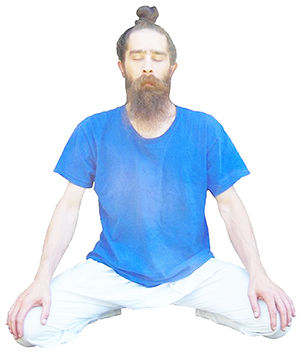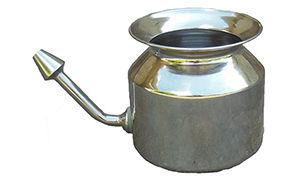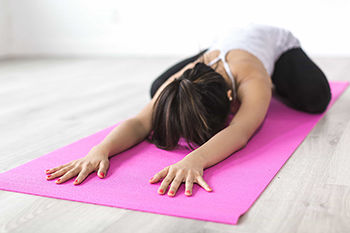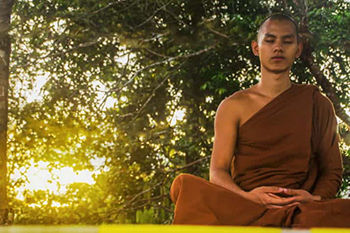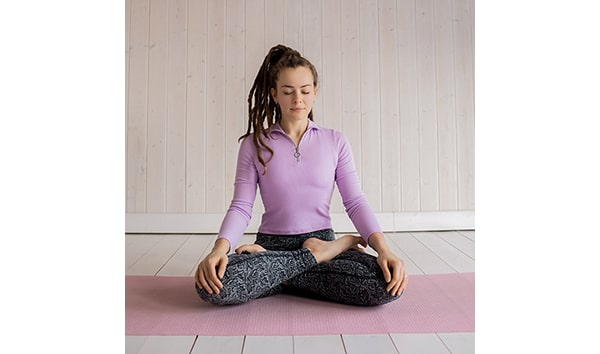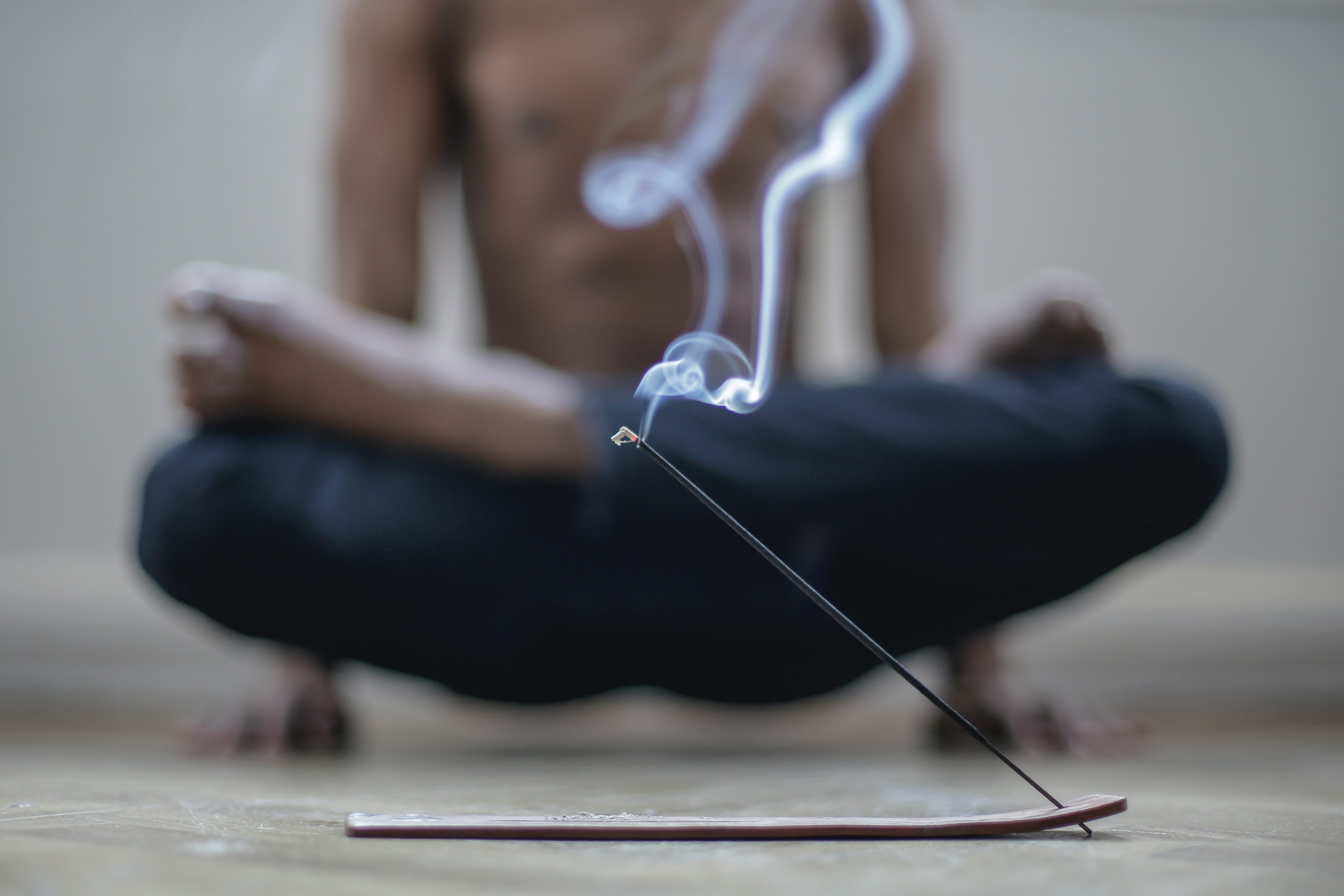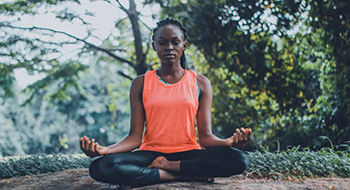Practice
Sit in Vajrasana or thunderbolt pose.
- Separate the knees as far as possible, while keeping the toes in contact with the floor.
- Separate the feet just enough to allow the buttocks and perineum to rest flat on the floor between the feet.
- Place the hands on the knees with the palms facing down.
